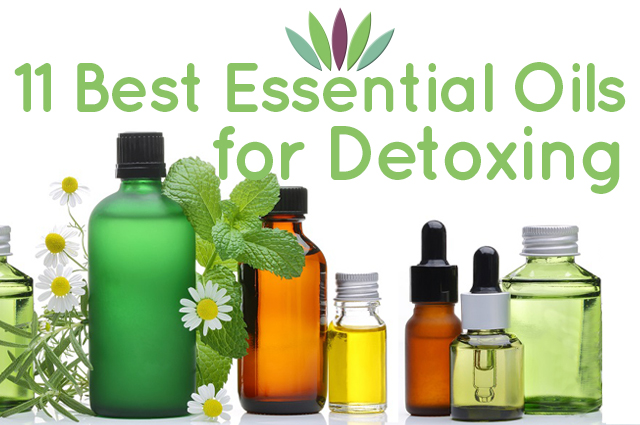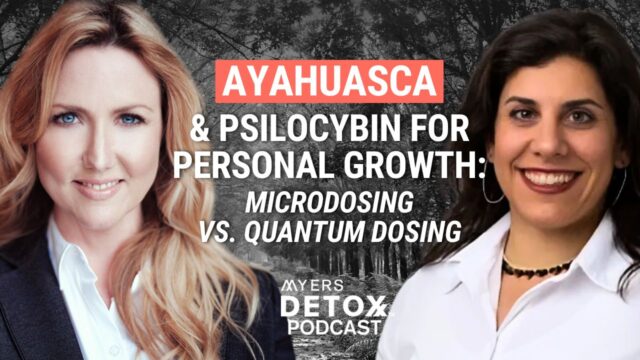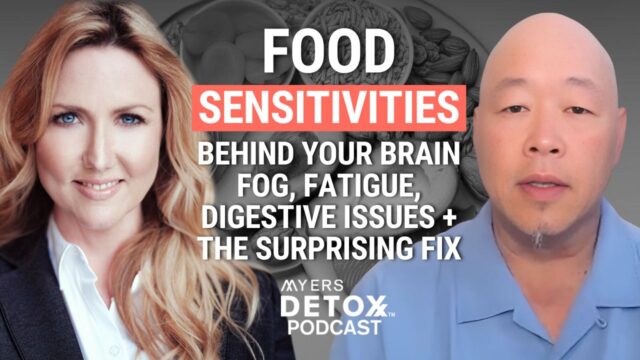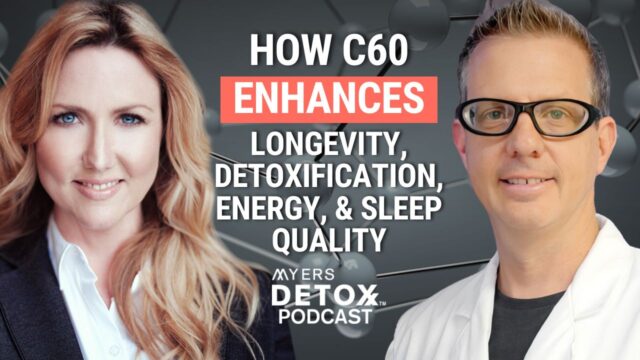Due to the levels of toxins in our environment, I am a fan of using every means necessary to detox. These are my favorite essential oils for detox.
Toxic metals such as arsenic, cadmium, lead, and mercury are virtually ubiquitous in our environment and contribute to the epidemic of chronic diseases that are plaguing our people. Drugs are eagerly sought-after to solve this problem by helping aid the detoxification of toxic elements, but you can use natural methods like essential oils to detox.
The key to understanding how essential oils can detox the body, therefore, is “chelation.” Chelation is a chemical term for the bonding of ions and molecules to metal ions. To date, most of the research we have about essential oils and chelation has been done about iron, a micronutrient required by almost all living organisms.
This is where essential oils can help, and these 11 are some of the most promising out there!
The Best Essential Oils for Detox
Due to the antioxidant capacity, research has shown that essential oil compounds can induce detoxification enzymes and can actually prevent toxicity and even cancer in cell line models. The compound citral is the perfect example because it can increase the activity of a key phase II detoxification enzyme known as glutathione-S-transferase, and researchers suggest it has a possible role in skin cancer prevention. (19) These 4 essential oils with the most citral have the potential to be the most detoxifying agents: (20)
1. Lemon Myrtle – Backhousia citrata (90-98% citral)
2. Lemongrass – Cymbopogon citratus (75-85%)
3. Lemon Teatree – Leptospermum citratum from Australia (80%)
4. May Chang – Litsea cubeba (65-74%)
5. Lemon
When many people think about how to detox with essential oils, lemon naturally comes up, not because of the research done on the subject, but because of the wildly popular lemon detox drinks that are being raved about in the health community. It may seem logical to assume that lemon oil is detoxifying because the juice is so powerfully effective, but that’s not necessarily true. We need to remember that the chemical constituency of the lemon rind (which the oil is made from) and the oil itself are quite different from the juice.
With that said, it’s important to note that lemon has been widely used in Ayurvedic medicine and the peel has been traditionally used to detoxify the liver. According to Indian researchers, hesperidin (a bioflavonoid found in lemon oil) has the ability to do even more by preventing lipopolysaccharide-induced endotoxicity in rats. As noted, “Lipopolysaccharide (LPS) is a major trigger of septic shock resulting in multiple organ damage through excessive stimulation of the host’s immune cells resulting in the release of cytokines. Previous studies have shown that hesperidin has several beneficial properties against inflammation and oxidative stress.” (21)
Additionally, hydrodistilled lemon oil has been proven to slow down key enzymes that are linked to neurodegenerative conditions and is a strong antioxidant as evident by its ability to chelate iron. (22)
6. Rosemary
Rosemary essential oil is a known iron chelator that has been proven to protect DNA. (23) It’s actually one of the most well-studied and promising detox oils. In one study rosemary outperformed other health and detox superstar oils oregano, thyme, sage, and clove. This is what the study found:
The oxidative degradation of lipids is one of the main factors limiting the shelf-life of food products. In recent years, several undesirable disorders have been detected as side-effects of using commonly used synthetic antioxidants. Apart from their use as aroma additives in food, essential oils from aromatic plants have shown potential for use in small amounts in fat-containing food systems to prevent or delay some types of chemical deterioration that occur during storage. Using a multiple-method approach, the antioxidant activity of the essentials oils from several spices widely used in Mediterranean countries was tested: oregano (Origanum vulgare), thyme (Thymus vulgaris), rosemary (Rosmarinus officinalis), sage (Salvia officinalis) and clove (Syzygium aromaticum). Their total phenolic compound content was also determined. The clove essential oil had the highest amount of total phenols and showed the highest percentage inhibition of DPPH radical and the highest FRAP value. The thyme essential oil produced the highest percentage inhibition of TBARS (89.84%). All the essential oils studied were capable of chelating iron(II), the rosemary essential oil producing the highest effect (76.06%) in this respect. The oregano essential oil had the highest antioxidant activity index in the Rancimat test. (24)
7. Clove
Another iron chelator, clove essential oil is arguably the most potent antioxidant on the planet. (25) Known detoxifying agents, researchers are discovering just how powerful antioxidants are and how important they are for health. The National Institute on Aging developed a way for us to quantify antioxidant capability in the Oxygen Radical Absorbance Capacity (ORAC) system of measurement. Within the ORAC system, cloves come in as one of the highest valued antioxidants, towering over sorghum, the next on the list, by a difference of more than 50,000. (26) As a concentrated essential oil, there is simply no comparison. However, some sources claim the following:
Disclaimer: once hosted by the USDA website, a peer-reviewed table of ORAC valued peer-reviewed resources is not available. The above chart is from BioSource Naturals.
8. Valerian Root
Valerian root essential oil is another ferrous iron chelator. It is interesting to note that research has suggested that methanolic extract of Valeriana jatamansi possesses the best chelation activity (76%), whereas aqueous extracts (43%) and essential oil (31%) do not perform as well in clinical studies. (27) This doesn’t mean that the essential oil is useless, 31% chelation is still good! It simply suggests that other non-oil forms are effective as well.
9. Mint Family
Several oils in the mint family have been shown to detox iron and ginger mint extract is the most prominent. Presumably due to its antioxidant capacity, Here it is also reasonable to assume that the antioxidant capacity is linked to the principal chemical compound present in each essential oil and the foremost study in this area states that, “The ability to chelate iron (II) species is dependent on the chemical composition of each variety and was more effective with the extract of M. x gentilis L. , followed by M. piperita L. We are assuming that the ability to chelate iron (II) species is linked to the principal chemical compound present in each essential oil: M. spicata L. is rich in pulegone (55.49%); M. x gentilis L. in linalyl acetate (45.59%); M. crispa L. in carvone (60.88%); M. piperita L. in l-menthol (32.43%) and M. x piperita L. in l-menthol (42.70%). (28)
10. Nees & Mart
An oil you’re probably not familiar with, the species Rhaphiodon echinus (Nees & Mart) Schauer is basically a weed from the family Lamiaceae that is commonly found in such as vacant lots and has been used in folklore medicine for treating cough, fatigue, pain, infections and inflammation. Research studies on echinus have shown that it contains significant antimicrobial and antioxidant activities, as well as anti-inflammatory and analgesic properties. Research has also uncovered that the essential oil from R. echinus leaf is rich in sesquiterpenes, mainly bicyclogermacrene and trans-caryophyllene. Most recently, scientists have discovered that aqueous and ethanolic extracts of Nees & Mart are rich in polyphenols and is truly a therapeutic oil.
The iron (II) chelation potential Nees & Mart essential oils has also been investigated in vitro. (29)
11. Myrrh
The more research uncovers, the more we see stress in its various states as an underlying cause of so many illnesses and discomforts. It’s no wonder that a powerful antioxidant would carry such varied benefits. And powerful it is! Myrrh emulsion exhibits an antioxidant effect strong enough that it can actually protect the liver – the “detox” organ that is bombarded with toxins every day – from oxidative damage. (30)
Essential Oil Sourcing Considerations
It is interesting to note that the chelating activity of essential oils based off of phenology is becoming of greater interest to scientists. Phenology, the study of periodic plant and animal life cycle events, discusses how plant compounds are influenced by seasonal variations in climate, as well as habitat factors such as elevation.
Research on thyme oil suggests that the flowering & vegetative phases does not affect the metal chelating activity of the essential oil, whereas the geographical location do. The metal chelating activity of the essential oils was assessed and compared to synthetic EDTA (a medical intervention used to treat lead poisoning). (31)
In 2015, the Journal of Essential Oil Research published a study showing how the chemical composition and iron chelating activity of Ruta chalepensis L. (Rutaceae) essential oil is influenced by phenological stages and plant organs. Essential oils were extracted by hydrodistillation from different organs (flowers, leaves and stems) and analyzed.
Results also showed that significant differences in chelating activity were affected by the actual plant organs. The lowest chelating activity, for example, was measured in the leaves, by contrast, the highest chelating activity was found in the stems and the flowers at the flowering stage. (32)
Once again, this reinforces the importance of knowing where your oils come from.
Tips on How to Detox with Essential Oils
There are several ways to detox with essential oils, and safety should be a top concern. Meaning this, you don’t want to drink several drops of essential oils in water every morning because you see something on Pinterest! Seriously, I see this stuff all the time and it’s ludicrous.
We must remember that essential oils are powerful substances and need to be handled with care. They are also a powerful detoxifying agent and can help you flush out toxins and cleanse the skin and oral cavity. These are some effective ways to regularly enjoy the detoxifying power of oils:
- Regular detox baths 2-3x per week.
- Oil Pulling with essential oils 3-4x per week.
- Taking my immune boosting shot 1-2x per week.
- Daily diffusion and stress reduction.
- 3-5% dilution detox message. 3% = 9 drops of EO per tablespoon of carrier oil. 5% = 15 drops
- To enhance your lemon juice + water detox morning ritual, add 1 drop of lemon oil 2-3x per week.
- For a special 1-week detox, add 1 drop of lemongrass + 1 drop of clove + 1 drop of rosemary into a gel capsule and take with water every morning for 7 days straight. Be sure not to do this for prolonged periods of time as resistance may develop.
For all serious conditions related to toxic overload or heavy metal detoxification, it’s not likely that essential oils alone can “cure” you. It would be best to work with a detox specialist that can prescribe a customized protocol to help your body heal itself.
Special Note About Essential Oil Detox Reactions
Finally, it’s super important to note that your skin should NOT break out in hives or a rash when using essential oils safely and effectively. You’ll see ludicrous claims in the blogosphere claiming that inflammatory responses breaking out in hives, pain and other signs of damage are “natural.” Nothing that hurts is natural! Please remember this.
The 4 Cardinal Signs of Inflammation are the body’s way of saying, “No! Stop hurting me!” Or, “Check under the hood, something is wrong!” Discontinue use immediately f you use essential oils and suffer from any of these: swelling, redness, itching and pain.
Please leave a comment if you have any other essential oils that you know to aid detox!










